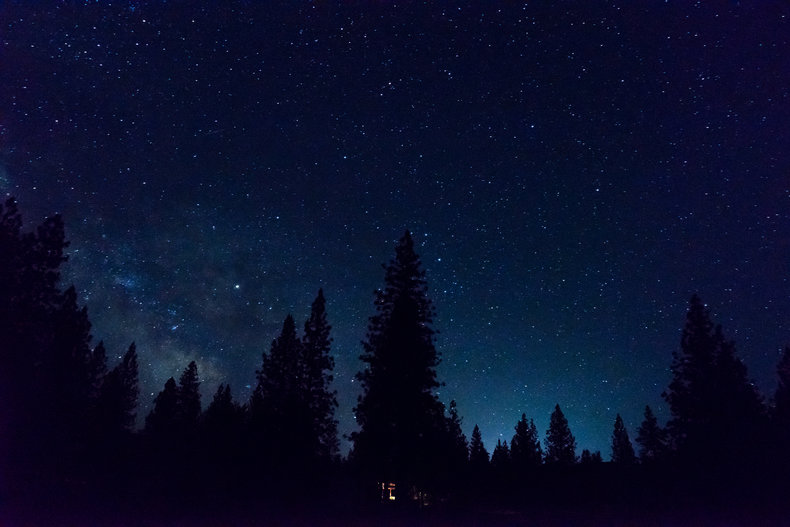|
| |
The most direct answer to why the night is black is that there is an absence of visible light at night due to the direction of the Earth with respect to the Sun. The following are additional explanations that are all equally valid:Rotation of the EarthBlack results from an absence of light including materials that absorb most light such that they do not reflect light. As the Earth rotates on its daily cycle many surfaces of the planet are facing away from the Sun. This is known as night and appears to be black due to a general absence of light.The Night Isn't BlackIt can be argued that the night isn't at all black because there is always some light from stars, the moon, human sources and other limited natural sources such as fire, volcanic activity or bioluminescence. This results in night environments that are arguably less than black such that they are dark grey or tinged with color.The Night is Midnight BlueThe nighttime sky has some light from stars and the reflection of sunlight off the moon. As in the day, this light may shift to blue due to an effect known as Rayleigh scattering whereby shorter wavelengths of blue light are scattered much more effectively by atmospheric particles than longer wavelengths like red and yellow. This may result in nighttime skies that appear to be a dark blue known as midnight blue.Olbers' ParadoxOlbers' paradox is the observation that if the universe is infinite and populated by any infinite number of stars, starlight should be extremely bright such that night would not be dark. There are an estimated 100 sextillion stars, or 100,000,000,000,000,000,000,000 stars, in the known Universe. This could potentially make the Earth very bright at night but this doesn't happen for two reasons. Firstly, the universe is approximately 13.8 billion years old and there hasn't been enough time for the light from distant stars to reach us. Secondly, due to the Doppler effect, light from distant stars shifts towards short wavelengths of light that aren't visible to humans as it travels the distances of space. This is an effect known as redshift that makes the night darker from the human perspective.Next: Meanings of the Color Black
© 2010-2024 Colorguide.org. All Rights Reserved. Reproduction of materials found on this site, in any form, without explicit permission is prohibited.
View credits & copyrights or citation information for this page.
|





















